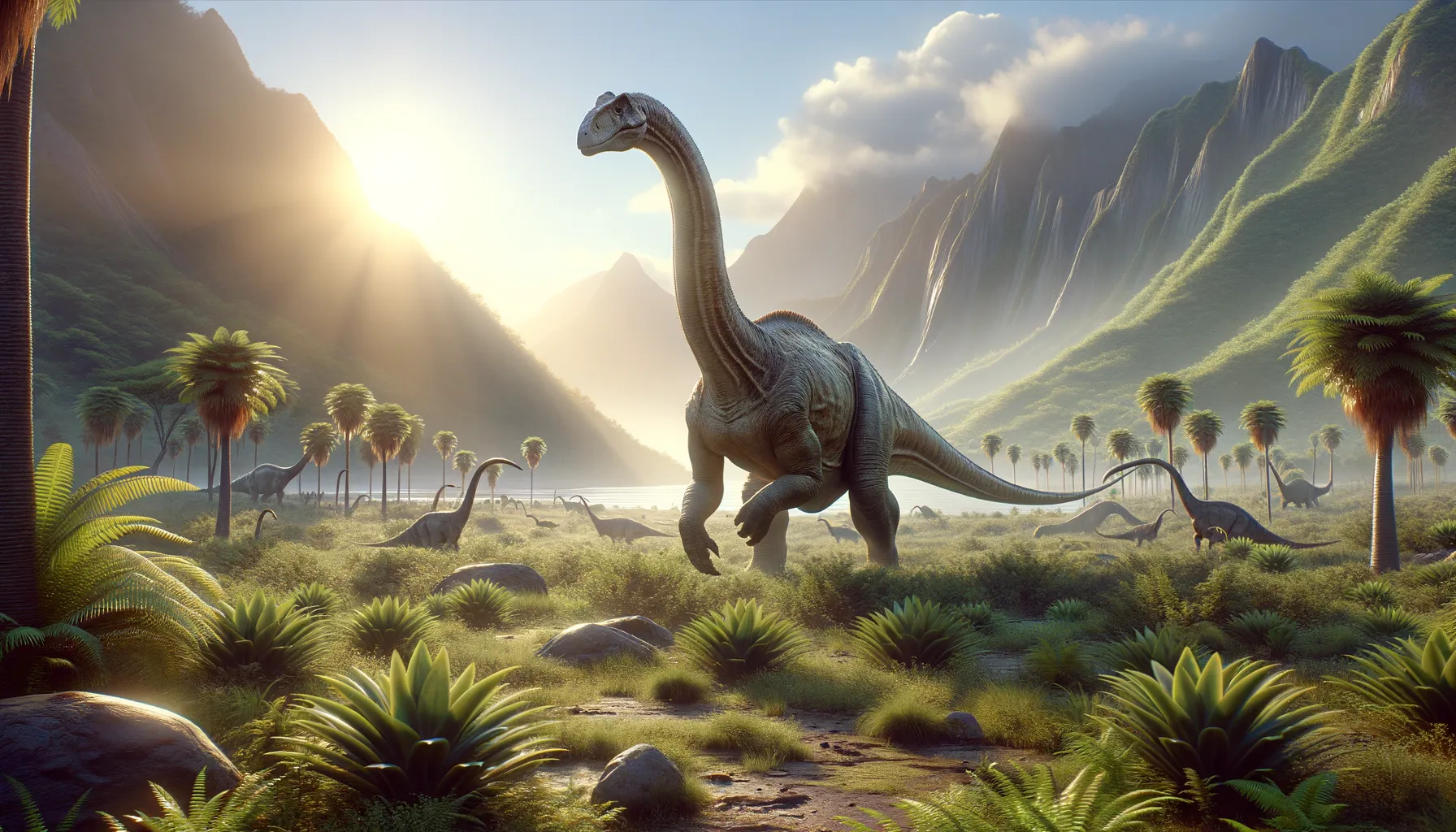
Massospondylus
Paving the way for the giants of Earth!
Period
Jurassic
Length
About 6 meters (20 feet) from head to tail.
Height
Approximately 1.5 meters (4.9 feet) tall at the hips.
Weight
Weighed around 500 kilograms (1,100 pounds).
Massospondylus was one of the early plant-eating dinosaurs that walked the Earth during the Jurassic period. This dinosaur is famous for its long neck and tail, which helped it reach vegetation other dinosaurs couldn’t. Not extremely large or fast, it nonetheless played a significant part in its ecosystem. Its remains provide valuable insight into the transition from smaller ancestors to the gigantic sauropods that would dominate later periods.
Diet
Massospondylus was primarily herbivorous. It fed on leaves and other plant material using its peg-like teeth. It might have also been opportunistic, occasionally consuming small insects or other protein sources.
Hunting
Being an herbivore, Massospondylus did not hunt other animals. It's believed to have foraged for food, using its long neck to reach a variety of plants. This dinosaur may have used its beak-like mouth to strip foliage from branches.
Environmental challenges
Massospondylus faced environmental changes such as shifting climates and the competition for food resources with other herbivores. These challenges would have influenced its migration patterns as it sought new feeding grounds. Adapting to these changes was crucial for its survival during the Jurassic period. Additionally, predatory threats from larger carnivorous dinosaurs would have impacted its living strategies.
Speed
Moderate pace, not exceptionally fast.
Lifespan
Lived up to around 25 to 30 years.
First discovery
Discovered in South Africa in 1854.
Fun Facts
- Massospondylus was a dinosaur that lived about 200 million years ago during the Early Jurassic period.
- This dinosaur was a herbivore, meaning it primarily ate plants.
- Massospondylus had a long neck and tail, making it look similar to a small version of the famous sauropods.
- Scientists believe Massospondylus could walk on two legs but might have sometimes walked on all four.
- The first fossils of Massospondylus were discovered in South Africa in 1854.
- Massospondylus is one of the earliest dinosaurs that eggs and embryos have been found, helping researchers understand their development.
- Despite its large size, Massospondylus was considered a medium-sized dinosaur, approximately 13 to 20 feet in length.
Growth and Development
Massospondylus showed rapid growth in its juvenile stages, which can be seen in the changes in bone structure over time. Like many dinosaurs, it likely experienced a growth spurt to reach maturity quickly. This fast growth helped them become less vulnerable to predators. As they aged, growth rates probably slowed down to maintain their size and strength.
Habitat
Massospondylus lived in regions that today are parts of Africa, primarily in semi-arid environments with seasonal rainfall. Forested areas with abundant plant life provided suitable grazing grounds. Water sources were essential to their survival, and they likely stayed close to rivers and lakes. The habitat varied over time due to geological changes, influencing their migration patterns.
Interaction with other species
As herbivores, Massospondylus likely shared its environment with a variety of other plant-eating dinosaurs. It would have coexisted alongside predators like early theropods. Their social structures might have included protection strategies against these predators. Interactions with smaller species may have been minimal but played a role in the ecosystem balance.
Natural lifespan
Massospondylus had a potential natural lifespan of up to 30 years.
Reproduction
Reproduction in Massospondylus was likely egg-based, as evidenced by fossilized eggs and nesting sites. Parents may have displayed some form of nesting behavior, such as guarding their eggs. Hatchlings grew rapidly to improve their chances of survival. Parental care, if present, would have been crucial for safeguarding the young from predators.
Social behaviour
Massospondylus might have lived in small herds or family groups, which would offer protection against predators. Social behaviors could include group foraging and shared nesting sites. Communication among individuals might be through vocalizations or body language. These social structures helped improve survival chances in a dynamic environment.
Fossil locations
Massospondylus fossils have primarily been found in South Africa. The discovery of these fossils gave insights into their biology and ecology. Fossilized eggs were also discovered, which provided evidence of their reproductive behavior. Additional finds in Lesotho contribute to understanding their distribution across Gondwana continents.
